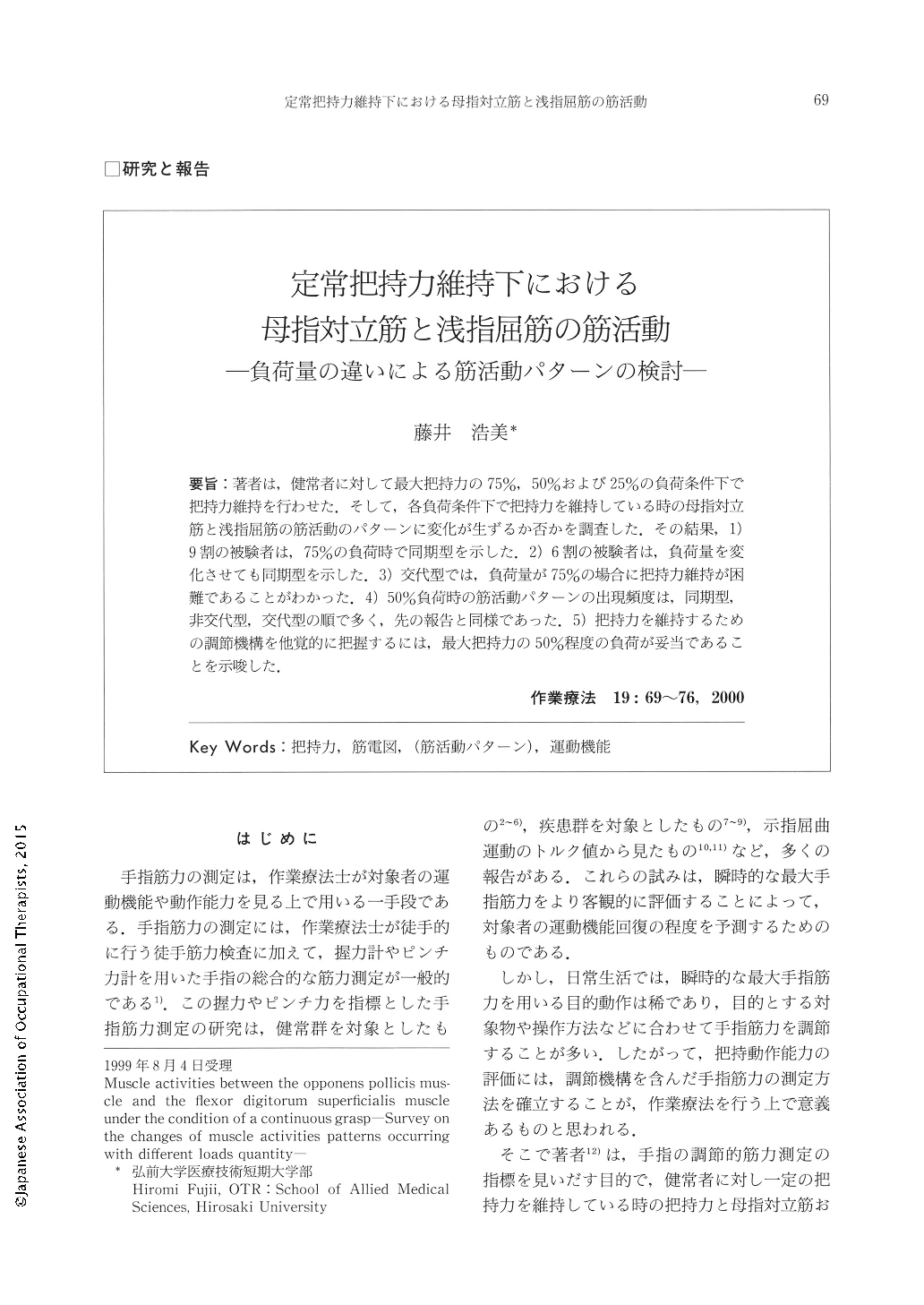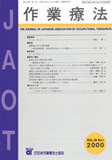Japanese
English
- 販売していません
- Abstract 文献概要
- 1ページ目 Look Inside
- 参考文献 Reference
要旨:著者は,健常者に対して最大把持力の75%,50%および25%の負荷条件下で把持力維持を行わせた.そして,各負荷条件下で把持力を維持している時の母指対立筋と浅指屈筋の筋活動のパターンに変化が生ずるか否かを調査した.その結果,1)9割の被験者は,75%の負荷時で同期型を示した.2)6割の被験者は,負荷量を変化させても同期型を示した.3)交代型では,負荷量が75%の場合に把持力維持が困難であることがわかった.4)50%負荷時の筋活動パターンの出現頻度は,同期型,非交代型,交代型の順で多く,先の報告と同様であった.5)把持力を維持するための調節機構を他覚的に把握するには,最大把持力の50%程度の負荷が妥当であることを示唆した.
The author investigated whether the changes would occur in the muscle activities pattern of the opponens pollicis muscle and the flexor digitorum superficialis muscle under 75%, 50%, and 25% of load conditions of the maximum grasp power experienced by healthy subjects. Then, the author examined the above mentioned 3 examinations and how they would relate to the information communication form of the movement control, which was related with a continuous grasp maintenance. The author obtained the following results: 1) In study the on 75% of load, 90 percent of the subjects showed the synchronousness type. 2) 60% of the subjects showed the synchronousness type even if the author directed changes of load. Furthermore, no change were seen in the muscle activities pattern. 3) The author pointed out that the alternation type under 75% of load could not maintain a continuous grasp. 4) Three types of muscle activities patterns in the case of 50% of maximum grasp power were, in order, the synchronousness type, the non-alternation type, and the alternation type. This result was the same as our last report (1990). 5) It was suggested that 50% load of the maximum grasp power could be obtained objectively on the control mechanism of a continuous grasp.

Copyright © 2000, Japanese Association of Occupational Therapists. All rights reserved.


